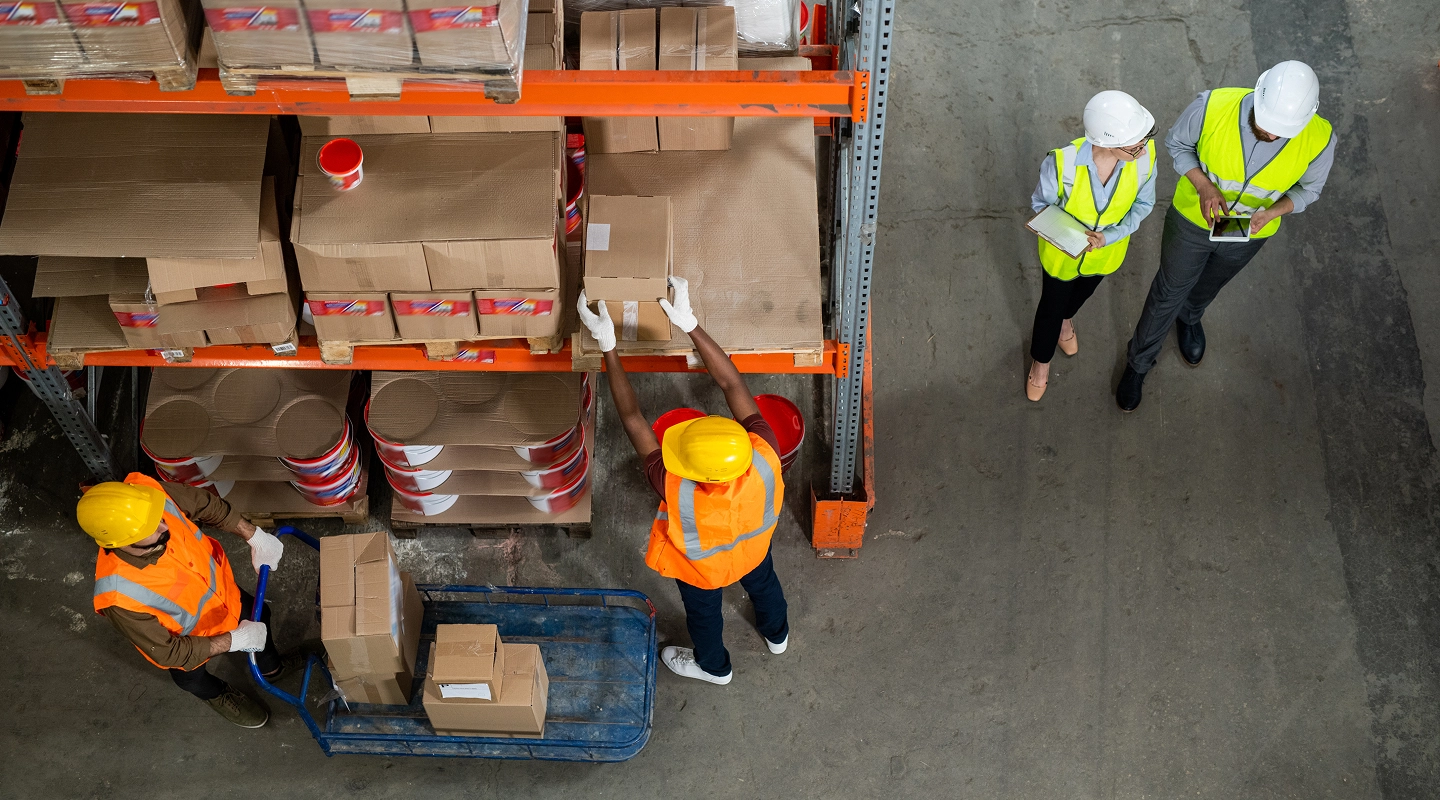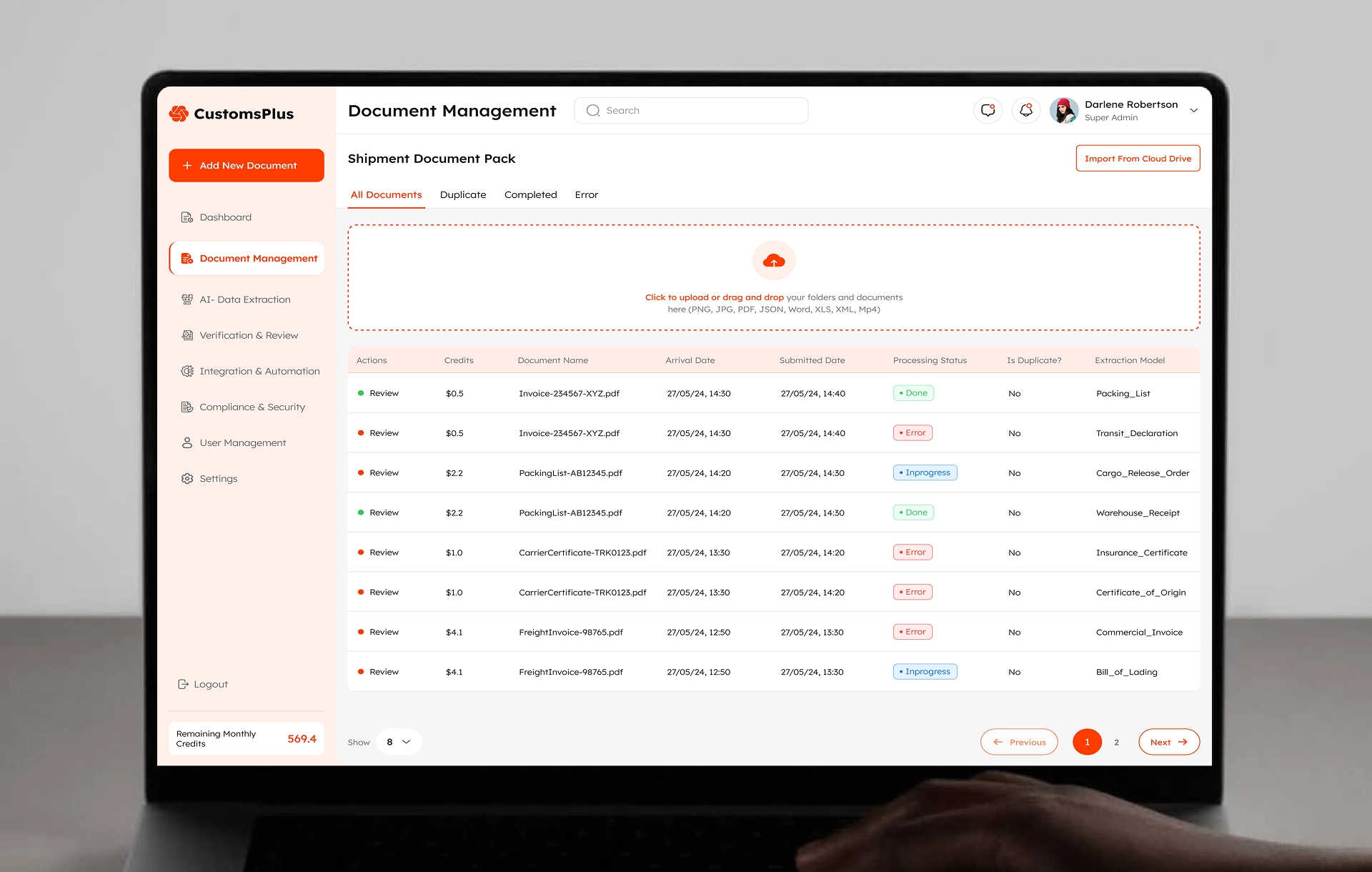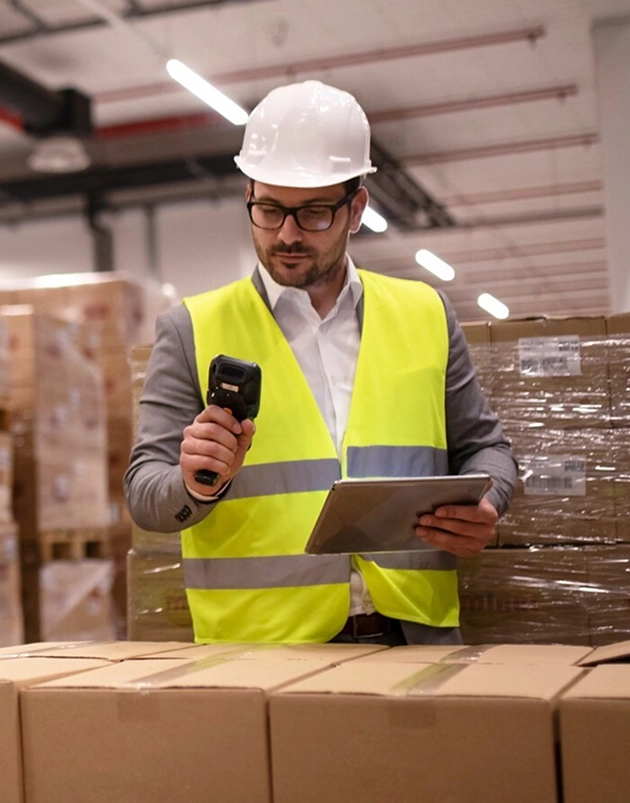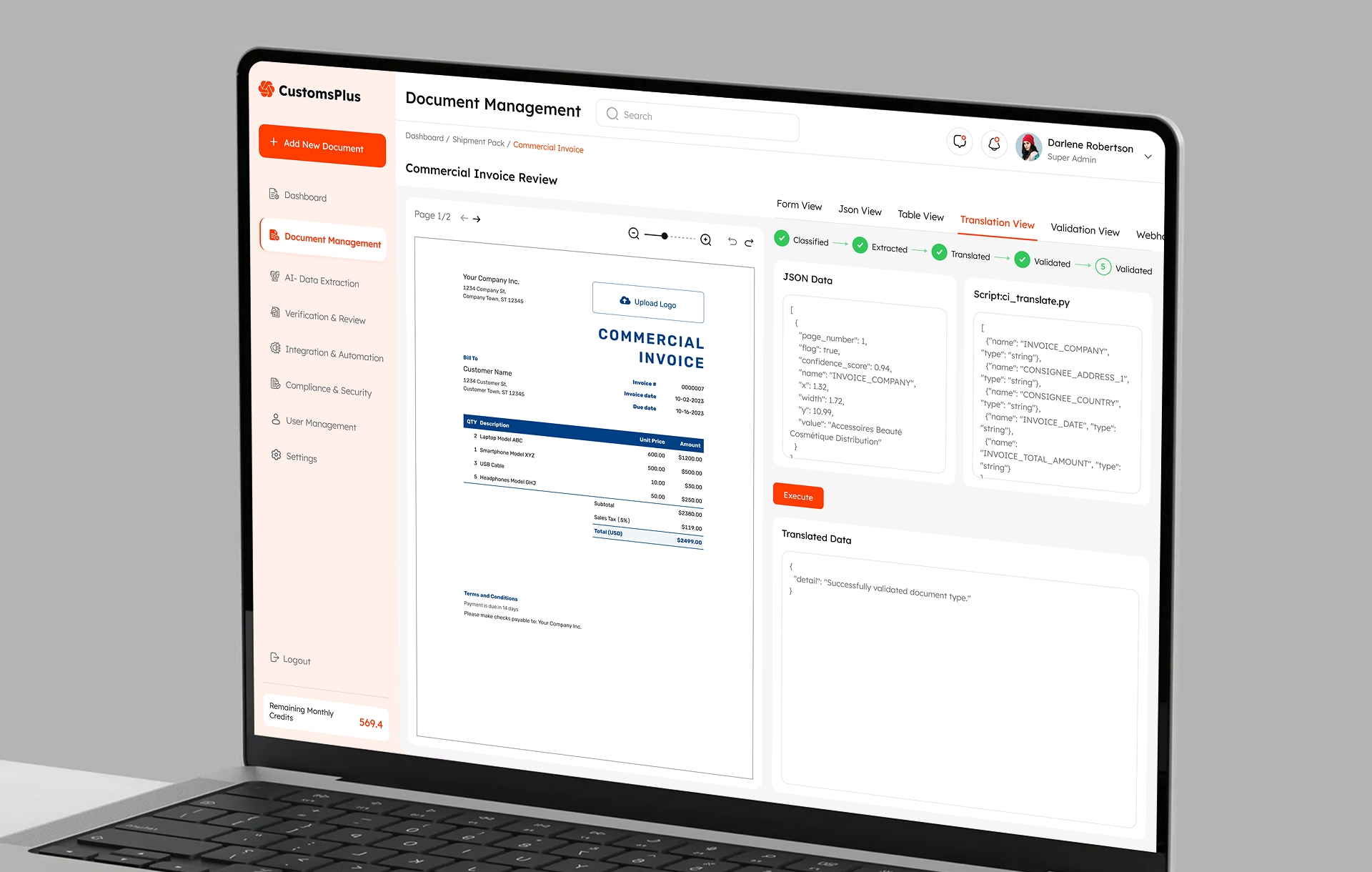With thousands of shipments moving across the borders every day, logistics companies, freight forwarders, and third-party logistics providers (3PLs) around the world receive hundreds of documents daily.
Each shipment carries a trail of paperwork,paperwork including the shipping manifests, customs declarations, commercial invoices, bills of lading, packing lists, and more—essential for customs clearance. Each document contains vital information that must be accurately extracted and entered into various systems.
Here was the problem:problem, all of this was done manually. The logistics workers manually sift through the PDFs or files, entering the data word by word, validating information, and then transferring it into operational systems.

The primary challenges due to the manual document process were:
Recognizing these pain points, CustomsPlus, a leading provider of automated customs technology, sought to revolutionize how logistics documents are processed.
This sparked the development of a cutting-edge solution that could automatically classify, extract, validate, and seamlessly integrate logistics data into existing systems—with minimal human intervention.

We built an AI-powered document processing automation system designed to transform raw, unstructured PDFs into structured, actionable data. By leveraging artificial intelligence and machine learning, the solution reduces dependency on manual data entry and streamlines customs processes like never before.
Manual handling of documents like invoices, packing lists, and shipping manifests is labor-intensive and prone to human error. This not only slows down operations but also increases the likelihood of inaccuracies and financial discrepancies. We implemented:
Without clear visibility into processed data, verifying the accuracy of information becomes a daunting task. This lack of transparency can lead to delays and frequent rechecks, affecting overall productivity. Our team worked on:
Diverse document formats often result in inconsistent data outputs, complicating integration with various enterprise systems such as ERPs, CRMs, and warehouse management systems. This can lead to additional manual adjustments and restructuring work. We achieved it with:
The logistics industry continually evolves, and static systems quickly become outdated as document formats change and data requirements shift. To ensure adaptability, we designed:

We built an AI-powered document processing automation system designed to transform raw, unstructured PDFs into structured, actionable data. By leveraging artificial intelligence and machine learning, the solution reduces dependency on manual data entry and streamlines customs processes like never before.
By automating classification and extraction, businesses saw a 50-70% reduction in manual data entry efforts. Employees no longer spent hours transcribing information, allowing them to focus on higher-value tasks.
Automation cut down the time spent on document handling from hours to minutes, allowing logistics teams to focus on more strategic tasks.
With AI-powered validation, errors and inconsistencies were nearly eliminated, reducing compliance risks and costly delays.
Real-time webhook integration meant that businesses could process and act on documents instantly. This eliminated the traditional lag in data entry and processing, improving overall workflow efficiency.
Built on a serverless architecture using AWS and Azure, we designed the platform to ensure scalability without the need for dedicated infrastructure management. As businesses grew, CustomsPlus seamlessly handled increased document volumes without performance issues.


CustomsPlus didn’t just automate document handling—it redefined it. By eliminating manual effort, reducing errors, and enabling seamless integration, the platform became a game-changer for logistics companies, freight forwarders, 3PL providers, and businesses dealing with high volumes of paperwork.
As global trade continues to expand, CustomPlus remains committed to driving innovation in AI-powered automation for logistics and beyond.
